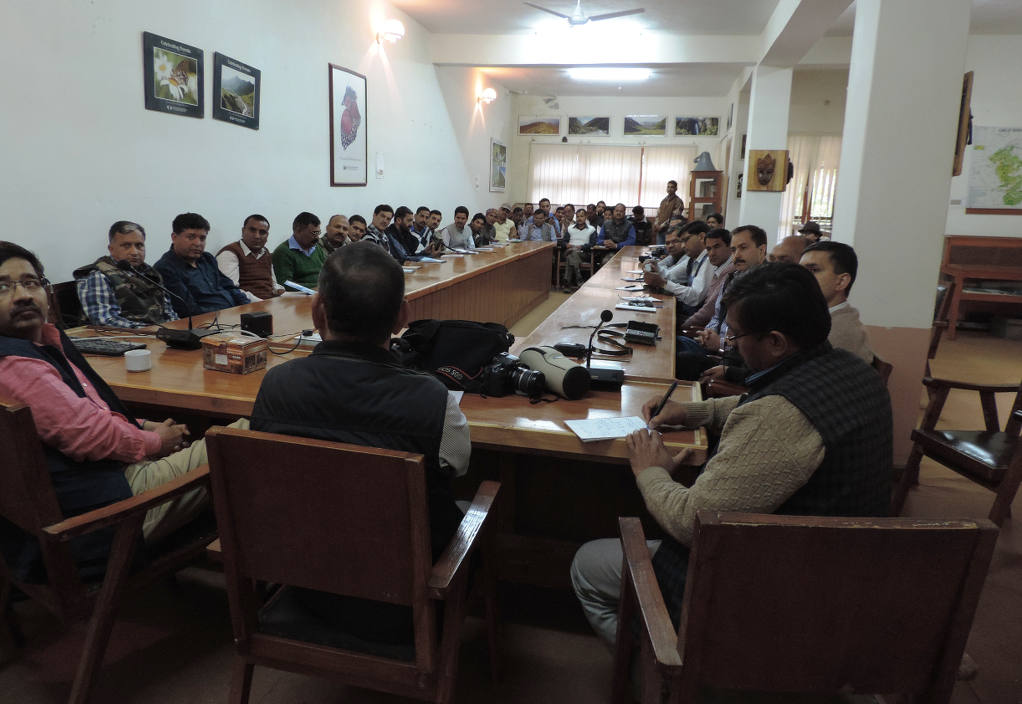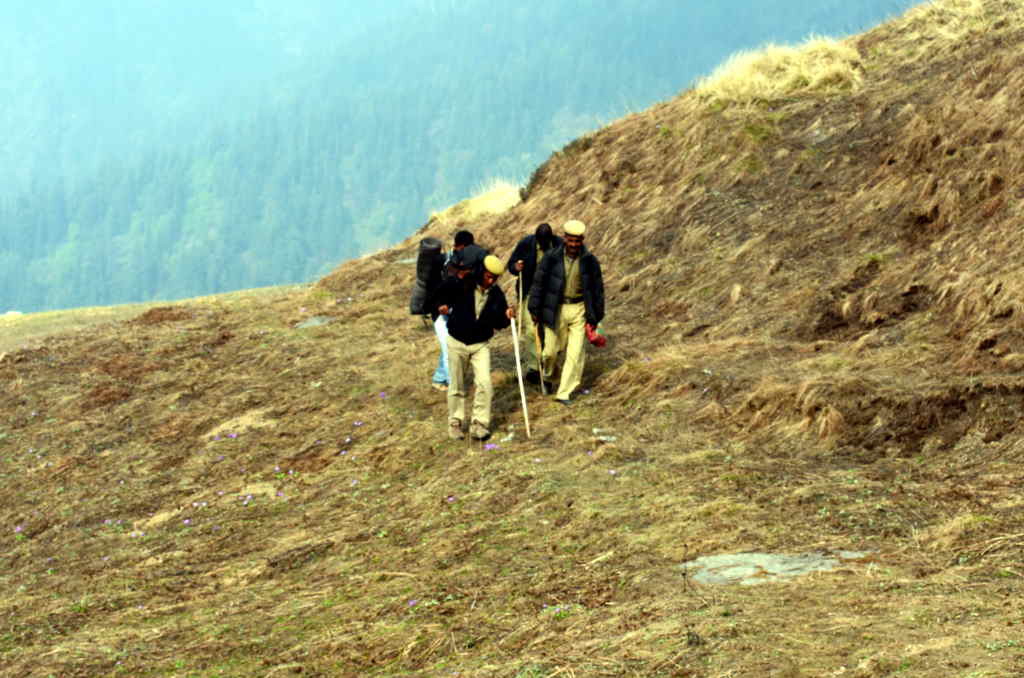
Protection Measures
Protection Measures
Protective measures currently being implemented in GHNP are laid out in the Management Plan approved in 2006, and in turn are based upon provisions of the amended WPLA 1972 and relevant provisions of Acts and government orders.
The approach is fundamentally based on enforcing a permit system that stipulates that no one (visitor or Ecozone resident) can enter without first obtaining a permit. Enforcement of this permit system and other regulations is accomplished through regular visits of GHNP’s field staff (see 5j), who also provide monitoring of key resources and collection of data for use in resource management.
Training of Frontline Staff
This is being done for all staff of GHNP stationed in Park locations with high incidence of wildlife and other key resources such as unique habitats, water resources, and geological features of the Park. The specific areas for training are:
- Field (Jungle) craft including recognition of wildlife signs, response to an encounter with a wild animal, survey and census techniques and related aspects.
- Weapons training (if appropriate)
- Legal Process and Procedures related to prosecution
- Rock climbing and mountaineering
WL Protection Maps
Preparation of a series of special-focus Wildlife Protection maps has been accomplished with the help of scientists from the Wildlife Institute of India. These have been prepared for various animals habitats (employing a GIS) and are used for management purposes.
This enhances protection of wildlife hot spots of the GHNP as well as its unique topography, water/salt points, vegetation types associated with hotspots, and along trekking routes of special concern.
Prevention of Poaching
Organized poaching of wildlife or illegal collection of medicinal plants is usually the work of a few individuals who are not residents of the Ecozone. Ecozone villagers who share the benefits of Park’s ecodevelopment programme typically have latent resentment against such poachers, and there is a system of informers from among local people who help Park staff in protection work. GHNP is an example where Park management is involving local community in wildlife protection through alternative income generation sources.
Anti-poaching Operations
To more effectively control continued poaching, Park staff work first to better understand its character.
Group Patrolling and Reporting
A system of group patrolling and reporting, in which a group consisting of the Wildlife Guards and Wildlife Watchers participate is in place. This has been introduced for more effective patrolling by WL staff and WL watchers.
Illegal Trade in Wildlife
As such there is a great paucity of knowledge about illegal trade in wildlife, its derivatives, and parts, among the staff of forest, wildlife and police departments. Courses for this subject are conducted with the help of the faculty of Wildlife Institute of India and NGOs such as WWF-India, TRAFFIC India, and Wildlife Protection Society of India.
Visitation in the Park
Considering the fragile nature of Park ecosystems, the Park management is not in favour of developing roads or paved trails in GHNP. Hence, only those who love adventure are allowed to go into the Park.
The 90% area of Ecozone is forest with easy walks. In general, the Park management encourages most of the tourists to go into the Ecozone forests.




